The week at a glance
- Pied-billed Grebe in Greater Manchester
- Green Heron and American Bittern still in Cornwall
- Thayer's Gull in Essex
- Possible American Herring Gulls in Ayr and Cheshire
- Brown Shrike in East Yorkshire
- Dead Yellow-billed Cuckoo in Outer Hebrides
- American Robin in Devon
- House Crow still in Co Cork
Autumn is perhaps just starting to breath its last, but there was still plenty of interest from all quarters this week. Cornwall continued to shine with the first-winter Green Heron continuing to perform at the Lost Gardens of Heligan all week and the American Bittern finally gave good views at Walmsley Sanctuary to 6th. Restricted access to the tower hide to view this bird caused some consternation and there was even a minor scuffle at one point! I bet the members must be glad to have the hide to themselves again now.
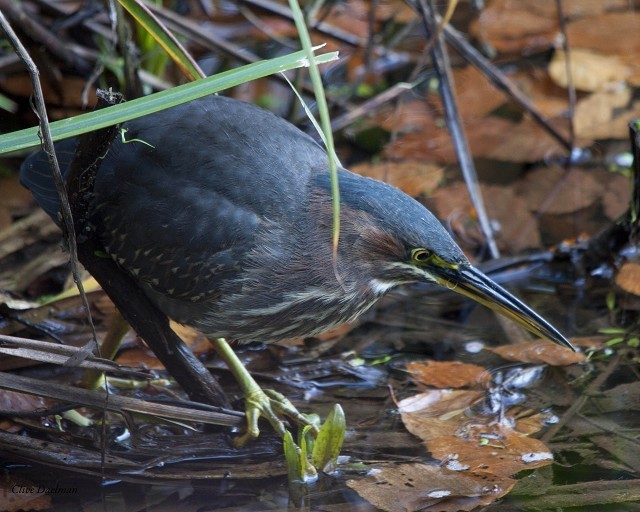
Green Heron, Heligan, Cornwall (Photo: Mr Clive Daelman)

American Bittern, Watergate Bay, Cornwall (Photo: Adi Sheppard)
Mansfield RSPB group's trip to Hollingworth Lake (Gtr Manchester) on 7th was somewhat livened up when the group found an odd-looking grebe associating with the ducks there. It was only a couple of days later that it was identified from photographs as Greater Manchester's first record of Pied-billed Grebe, thankfully remaining until the end of the week.
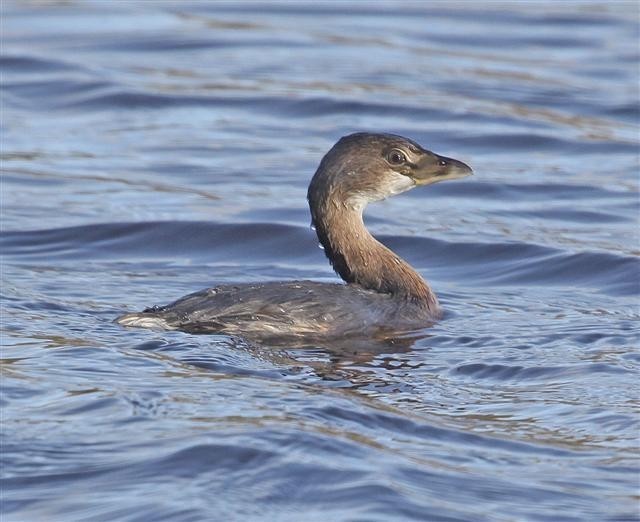
Pied-billed Grebe, Hollingworth Lake CP, Greater Manchester (Photo: Michael Foley)
Slightly more frustrating was the one-day appearance of a very good candidate for a Thayer's Gull on Pitsea Landfill (Essex) on 6th. An excellent set of photographs should help its case, but with access to the site all but impossible this won't be easily twitched. The larophiles also had their work cut out with a probable first-winter American Herring Gull at Troon (Ayr) on 5th, and this was incredibly followed by a probable second-winter at Hoylake (Cheshire) on 6th.
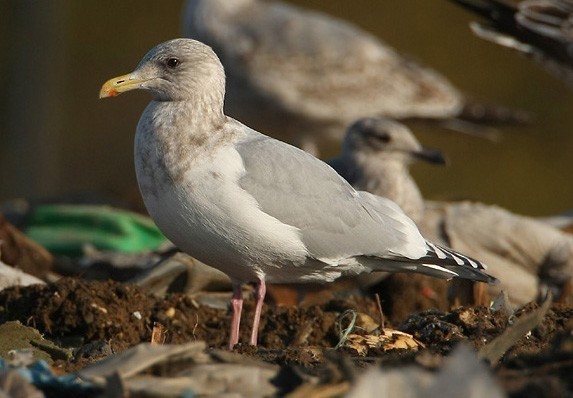
Thayer's Gull, undisclosed site, Essex (Photo: Steve Arlow)
Another rapid reidentification this week was a Brown Shrike at Flamborough Head (East Yorkshire) on 7th, originally thought to be an Isabelline Shrike. Unfortunately it didn't stay to be admired or pored over.
In what's turning out to be an odd autumn for 'yanks', a Yellow-billed Cuckoo was found freshly dead on South Uist (Outer Hebrides) on 4th, and is surprisingly the first record for the islands. Add to this the late addition of an American Robin at the Nearctic mecca of Turf (Devon) on 10th and things aren't dead yet (apart from cuckoos). This bird hopped out on the path at last light in front of a visiting birder dipping the American Golden Plover and is still present today. Devon has actually done quite well with American Robins, with three previous records, but these have all been on Lundy (in 1952, 1962 and 1982), so a mainland one will be welcome.
Last but not least, the House Crow remained at Cobh (Co Cork) to at least 9th.

House Crow, Cobh, Cork (Photo: Phil Rhodes)
Snow Geese were reported from Ellister and Ireland (Shetland) on 4th–7th, Greenlaw Moor (Borders) on 7th–8th, Wooler (Northumberland) on 8th and two were, unusually, reported over Hemel Hempstead (Hertfordshire) on 7th. The Richardson's Canada Goose remained at Loch Gruinart, Islay (Argyll) to 9th and there were two Lesser Canada Geese at Belfast Lough (Co Antrim) on 6th. There was also a belated report of a 'small Canada Goose' at Lissadell (Co Sligo) on 3rd.
Two Black Brants were again reported at Wells-next-the-Sea (Norfolk) on 9th (or is one of these the hybrid previously reported?) with one also still at Ferrybridge (Dorset) on 9th. The only Red-breasted Geese were in Lancashire, at Marshside RSPB to 6th and at Martin Mere to 9th.
Aside from the Ferruginous Duck on Chew Valley Lake (Somerset), there were other drakes still on Kingsmill Reservoir (Nottinghamshire) to 5th and the female was at Lackford Lakes (Suffolk) to 7th. Another female was at Shapwick Heath (Somerset) on 7th and a drake was new in on Corbet Lough (Co Down) on 8th–10th. The drake Ring-necked Duck also remained at Chew to 8th, with others on Loch Evelix (Highland) on 7th and Carrowmore Lake (Co Mayo) on 10th.

Ferruginous Duck, Lackford Lakes SWT, Suffolk (Photo: Barry)
The Blue-winged Teal was reported again from Tacumshin (Co Wexford) on 4th, with one also still at Bull Island (Co Dublin) to 7th. First-winter drake Lesser Scaup remained at Ballygawley Lake (Co Sligo) to 7th and La Grande Mare (Guernsey) to 10th, and another was in Cardiff Bay (Glamorgan) on 7th–9th. The drake Green-winged Teal continued to show well at Cley Marshes (Norfolk) to 10th, with others still at Kinneil Lagoon (Forth) to 9th and Loch Gruinart (Islay) to 6th, and new arrivals at Rutland Water on 5th–9th, Sandscale Haws (Cumbria) on 5th, Caerlaverock (Dumfries & Galloway) on 6th–10th and Loch a'Phuill, Tiree (Argyll) on 7th–10th. The drake American Wigeon remained at Wheldrake Ings (North Yorkshire) to 7th, as did the female at Slimbridge (Gloucestershire) to 4th.
The immature drake Surf Scoter remained offshore at Ynyslas (Ceredigion) and was joined by a female on 7th–9th, with one also reappearing at Inganess Bay (Orkney) on 4th and a new drake at Ruddon's Point (Fife) on 6th. The drake King Eider remained for its eighth week off the Suffolk coast between Minsmere and Dunwich Cliffs, with one also still at Burghead (Moray & Nairn) to 5th and a female at West Voe of Sumburgh (Shetland) on 6th–10th. One also went north past Flamborough Head (East Yorkshire) on 7th. The drake Northern Eider was also still at Embo (Highland) on 10th. Wintry Smew were at Loch of Kinnordy (Angus & Dundee) to 4th, Loch of Strathbeg (Aberdeenshire) on 5th, Abberton Reservoir (Essex) to 7th, Far Ings (Lincolnshire) on 10th and Earlswood Lakes (Warwickshire) on 10th, with two briefly at Kirkandrews-on-Eden (Cumbria) on 7th.

King Eider, West Voe of Sumburgh, Mainland, Shetland (Photo: Steve Minton)
The 9th saw some bizarre seabird passage along the Thames, with Sooty Shearwater, two Razorbills, eight Little Gulls and a probable Black-throated Diver past Canvey Island (Essex) and also Gannet, Kittiwake, Common Scoter, Great Skua and Shag. There was also a report of a Sooty Shearwater past Gravesend (Kent) on the same day and, given the vagaries of recording in London (the LNHS covers the area within a 20-mile radius of St Paul's), depending on how far west this bird flew, it could be a first for London. Other Sooty Shearwaters were more expectedly seen past sites in North Yorkshire, Northumberland, Cornwall and Norfolk. Even more unexpected was a Red-throated Diver seen heading over the 'vis-mig' watchpoint on Steps Hill (Buckinghamshire) on 10th, then heading off into Bedfordshire.
A further two Balearic Shearwaters passed Pendeen (Cornwall) on 4th, with six past on 8th, when there were also six Grey Phalaropes. Other Balearics were recorded along the east coast and in the southwest, with the peak of 11 past Cley (Norfolk) on 9th (with five Pomarine Skuas, 13 Sooty Shearwaters, three Red-necked Grebes, 60 Little Gulls and four Great Northern Divers). The only 'big shear' was a report of a Cory's past Slaughden (Suffolk) on 7th. Also on the sea was the only White-billed Diver reported, at Kirkabister (Shetland) again on 6th.
Reports of Glossy Ibis continued to drop, with only three long-stayers remaining: at Welney (Norfolk) and on the Otter estuary all week and at Tacumshin (Co Wexford) to 7th. After a brief absence from the weekly review, there were three Purple Herons this week: one at Rothersthorpe (Northamptonshire) on 4th and two in off the sea at Mappleton (East Yorkshire) on 9th.
Great White Egrets remained at Dungeness (Kent), Idle Valley NR (Nottinghamshire), Westhay (Somerset) and Pitsford Reservoir (Northamptonshire), and there were 11 other records of single birds at widespread sites. Single Cattle Egrets also remained at Westleigh (Devon) to 6th and at Donna Nook (Lincolnshire), Poyston (Pembrokeshire) and Guyhirn (Cambridgeshire) all to 8th. There were also two on Jersey, at Grouville Marsh on 4th–5th, that had apparently been present since 27th October. The Squacco Heron was still pleasing photographers at Angle Bay (Pembrokeshire) to at least 8th and another was at Morpeth (Northumberland) on 7th–10th. This bird caused some extra excitement as the first photos hadn't ruled out one of the pond-herons, but this was rather optimistic.

Great White Egret, Great Mitton, Lancashire (Photo: Michael Foley)
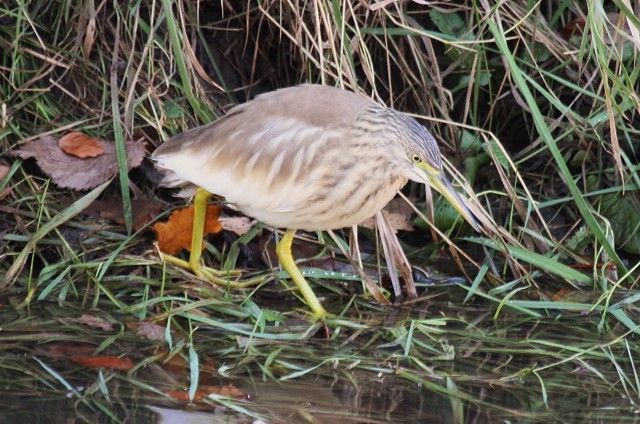
Squacco Heron, Morpeth, Northumberland (Photo: Adam Williams)
Only around 15 Rough-legged Buzzards remained, with three or four in Norfolk, two in Lincolnshire and two in South Yorkshire. Away from the east coast, birds were at Marsh Lane (West Midlands) briefly on 9th and Crossen Outer Marsh (Lancashire) on 7th. The only other raptor of interest was the Northern Harrier that remained at Tacumshin (Co Wexford) all week. Another bird roaming along the north Norfolk coast continued to elude observers, and may relate to this race.
American Golden Plovers remained at Eoropie, Lewis (Outer Hebrides) to 4th, Cley and Blakeney (Norfolk) to 10th and Turf (Devon) to 9th, with new birds at Dawlish Warren (Devon) on 7th, Loch of Clumlie (Shetland) on 7th and Ballyconneely (Co Galway) on 10th. A possible 'Lesser Golden Plover' in Cumbria south of Gretna on 8th was subsequently identified as a late Dotterel. A few Nearctic waders hung on into November, including the White-rumped Sandpiper at Clonea Strand (Co Waterford) to 9th and a new Semipalmated Sandpiper at Ballycotton (Co Cork) on 6th–10th. A Long-billed Dowitcher at Lodmoor (Dorset) on 7th was refound at nearby Radipole Lake the next day, and this may have been the same as at Colyford (Devon) on 9th–10th. Other long-stayers included the Spotted Sandpiper on St Agnes (Isles of Scilly) to 6th and the Lesser Yellowlegs on Port Meadow (Oxfordshire) to 8th, with another at Tacumshin (Co Wexford) to 6th.

Semipalmated Sandpiper, Ballycotton, Cork (Photo: Ronan McLaughlin)
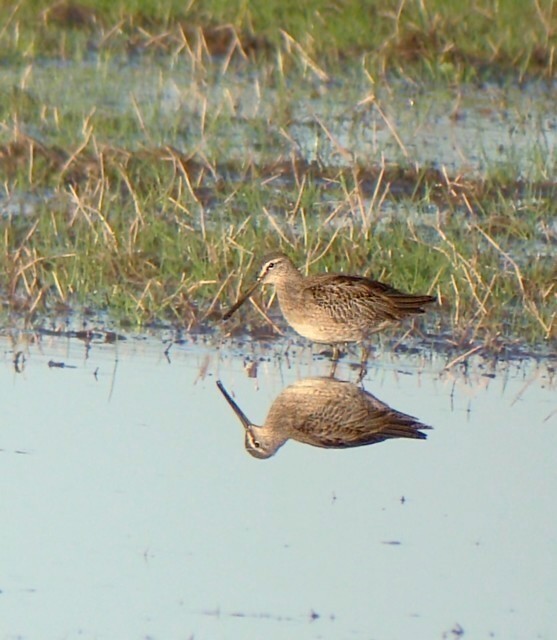
Long-billed Dowitcher, Colyford, Devon (Photo: K Woolley)
The two Grey Phalaropes remained at Cley (Norfolk) to 8th and singles were seen at 16 other scattered sites, mainly coastal. Inland birds included ones on Loompit Lake (Suffolk), on Cowbank Drain, Boston (Lincolnshire) and at Rutland Water to 5th.

Grey Phalarope, Loompit Lake, Suffolk (Photo: Chris Baines)
There were single figures of Glaucous Gulls reported, and aside from the long-staying Iceland Gulls in Ayr and Cobh (Co Cork), there was just a third-winter past Newbiggin-by-the-Sea (Northumberland) on 8th and one at Melby (Shetland) on 9th. Ring-billed Gulls remained at Prescot Reservoir (Lancashire) to 9th and Gosport (Hampshire) to 7th, with others at Blashford Lakes (Bedfordshire) on 7th and an adult at Sandycove (Co Dublin) on 8th.

Ring-billed Gull, Prescot Reservoirs (Permit Only), Lancashire (Photo: Stephen Tomlinson)
Derbyshire's first Franklin's Gull continued to commute between Willington Gravel Pits and Foremark Reservoir to 5th. The only Sabine's Gulls were reported later in the week, with birds past Shell Ness (Kent), along with seven Pomarine Skuas, on 7th, Pendeen (Cornwall) on 7th and Baltimore (Co Cork) on 9th.
Autumn must be over, as there were no records of Wryneck nor Short-toed Lark this week. Reasonable numbers of Shore Larks remained, including up to 24 at Holkham Gap (Norfolk), 14 at Kessingland (Suffolk) and 10 briefly at Gibraltar Point (Lincolnshire) on 4th. The only more northern birds were two at Spurn (East Yorkshire) to 4th and seven at John Muir Country Park (Lothian) to 10th.
I think it's safe to say that there are still lots of Waxwings around. Birds are on the move as well, with one bird colour-ringed in Aberdeen already resighted in Cumbria. More on colour rings soon. The biggest flocks reported this week were 2000 around Inverness (Highland), 800 in Glasgow (Clyde), 500 in Stirling (Forth) and around 300 in Govanhill (Clyde) and Edinburgh (Lothian). There are still few southwest of a line from Anglesey to East Sussex, though, with one two over Wembury (Devon) on 10th being notable.
240 Waxwing, Grangemouth, Forth (film: Roddy Barclay).
There was a resurgence of Richard's Pipits this week, with nine birds reported. One remained at Covehithe (Suffolk) to 6th with others sticking at Matlock Moor (Derbyshire) on 5th–10th and Sleddale (Cumbria) on 7th–8th. One-day birds were then seen at Snettisham Coastal Park (Norfolk), Christchurch Harbour (Dorset), Sunderland (Durham), St Mary's (Isles of Scilly), Keyhaven Marshes (Hampshire) and Whitburn Coastal Park (Durham). After a brief absence, red flanks and blue tails were back this week, with perhaps one last Red-flanked Bluetail, the 30th of the year, at Dungeness (Kent) on 6th.

Richard's Pipit, Covehithe, Suffolk (Photo: Jon Evans)

Red-flanked Bluetail, Dungeness RSPB, Kent (Photo: Steve Ashton)
The late Dusky Warbler remained on St Mary's (Isles of Scilly) all week and a late Barred Warbler was at Knockadoon Head (Co Cork) on 8th. Other warbler interest came in the form (literally) of a Central Asian Lesser Whitethroat at Rousay (Orkney) on 4th and a minula Desert Lesser Whitethroat ringed at Sumburgh Head (Shetland) on 9th. In Ireland, visiting birders heard a Cetti's Warbler at Tacumshin (Co Wexford) on 6th and managed to get the news out on what is only the third record for the country.
There were a much-reduced 16 Yellow-browed Warblers dotted around the country this week, with most now in the south, including three in Devon. Furthest north were birds at Uigen, Lewis (Outer Hebrides), Sunderland (Durham) and Flamborough Head (East Yorkshire). There were almost as many Pallas's Warblers, with at least 12 reported. These were generally much further north, including four in Northumberland, three in Norfolk and two in East Yorkshire. Furthest south were birds at Margate (Kent) on 5th and Woking (Surrey) on 6th. The only Red-breasted Flycatchers were on the Isle of May (Fife) on 6th and on Holy Island (Northumberland) on 7th.

Pallas's Warbler, Marsden Quarry, Durham (Photo: Mark Newsome)
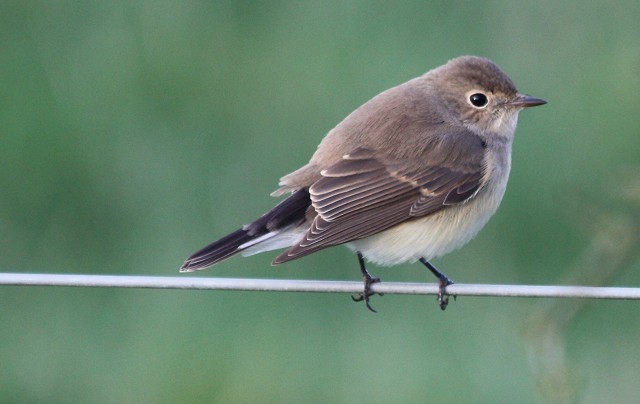
Red-breasted Flycatcher, Holy Island, Northumberland (Photo: Andy Mould)
At least 23 Great Grey Shrikes were well scattered around the country, with only Devon hosting more than one bird (three in fact). Interestingly, one present at Black Moor (South Yorkshire) from 28th October received a more critical examination this week, when it became apparent it showed several characteristics of the eastern homeyeri race. Not liking the limelight, it left on 6th. Another race of interest were the continued reports of Northern Long-tailed Tits, this week with two at Northrepps (Norfolk) on 4th and one at Stodmarsh (Kent) on 7th. There was just one Rose-coloured Starling, again at Voe (Shetland) on 7th.

Great Grey Shrike, Napton-on-the-Hill, Warwickshire (Photo: Dave Hutton)
The only Arctic Redpolls were both on Shetland, with another hornemanni at Sumburgh on 4th and a probable exilipes at Wester Quarff on 6th. Shetland also held a late Serin, on Out Skerries on 7th–9th, with another at Dungeness (Kent) on 7th.
Big groups of Lapland Buntings are a bit thin on the ground now, with 100 at Buckton (East Yorkshire) on 10th being by far the largest. Other notable counts were 35 at Grimston (East Yorkshire) on 8th, 20 at Gedney Drove End (Lincolnshire) on 7th and 20 at Mynachdy (Anglesey) on 7th. The only Little Bunting was one briefly at Spurn (East Yorkshire) on 7th.
Also of interest were some of the late migrants recorded, many of which are at their extremes now. These included:
- Swallow in Cornwall on 10th;
- Sandwich Tern in Cheshire on 9th and two in London on 8th;
- Whinchat in Co Cork and Lothian on 7th;
- Little Ringed Plover in Staffordshire to 7th;
- Wheatear in Staffordshire and South Yorkshire on 6th;
- Sand Martin in Co Dublin on 6th;
- Willow Warbler in Cumbria on 6th;
- Dotterel in Norfolk on 5th and Cumbria on 8th;
- Garganey in Bedfordshire to 5th.
One of the migration highlights of the autumn came from Constitution Hill, Poole (Dorset) on 7th, when 'vis-mig' recorders had one of the highest counts ever of Woodpigeon. Over a four-hour period they recorded a massive 161,257 birds! Thanks to the UK vis-mig group for these counts.
Photo of the Week: 4th–10th November 2010

Little Owl, undisclosed site, Worcestershire (Photo:
Mark Hancox)
Owls are always popular photographic subjects and they have been well represented in our past Photos of the Week. Surprisingly, the Little Owl is the only resident owl species in the UK that has never been featured in a PotW. Little Owls aren't all that difficult to locate in much of the south of the UK and have the advantage of being active during daylight hours. Their striking yellow eyes are particularly attractive, especially when the bird is looking straight at the camera ('down the barrel', as photographers say). Perhaps the limitation of most Little Owl shots is that they can be rather static, as these birds can spend long periods doing very little. It can therefore be necessary to spend quite some time with them to catch one in a more dynamic pose. Bird photographer Mark Hancox understands the importance of this patient, 'project' approach, having previously used it successfully with Kingfishers and reflection shots. Over the last few weeks, Mark has been working with a pair of Little Owls, setting up a hide and gaining their trust. He has already had some great results, including our well-posed PotW selection this week, and we're sure there are more great images to come.
Other notable photos

Waxwing, undisclosed site, Lancashire (Photo:
Tom Charles)

Marsh Harrier, Far Ings NR, Lincolnshire (Photo:
David Newby)

Red Kite, Wallingford, Oxfordshire (Photo:
Roger Wyatt)

American Kestrel, Landguard NR, Suffolk (Photo:
Jon Evans)

Curlew, Ardersier, Highland (Photo:
Marcus Conway - ebirder)

Little Auk, Fife Ness, Fife (Photo:
John Anderson)

Peregrine Falcon, Malvern Hills, Worcestershire (Photo:
Carl Day)
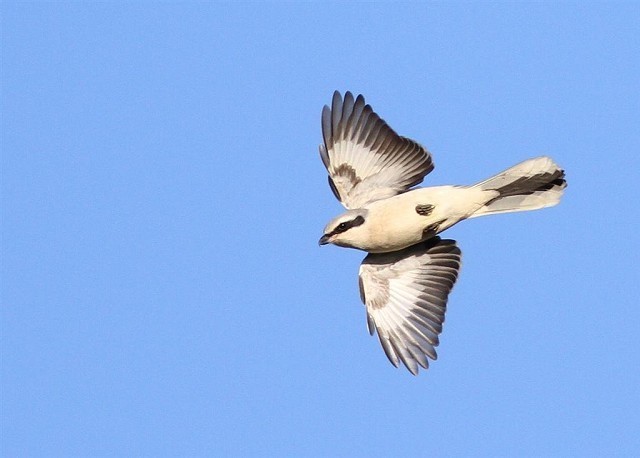
Great Grey Shrike, Napton-on-the-Hill, Warwickshire (Photo:
Max Silverman.)
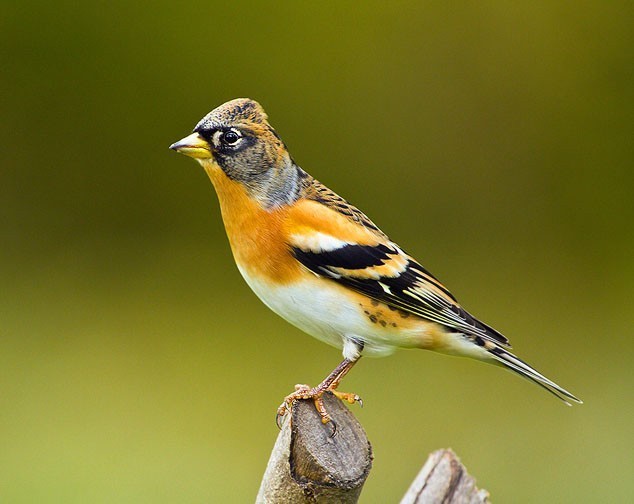
Brambling, Bromsgrove, Worcestershire (Photo:
Stuart Andrews)

Pied Wagtail, Northam Burrows CP, Devon (Photo:
Rob Cross)
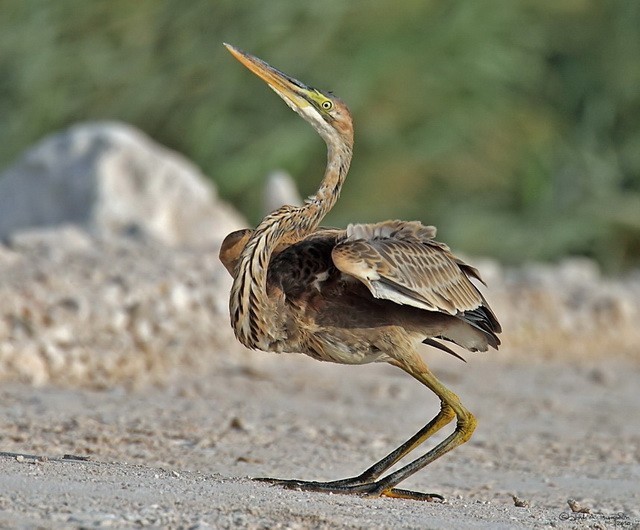
Purple Heron, Qatar (Photo:
John A Thompson)
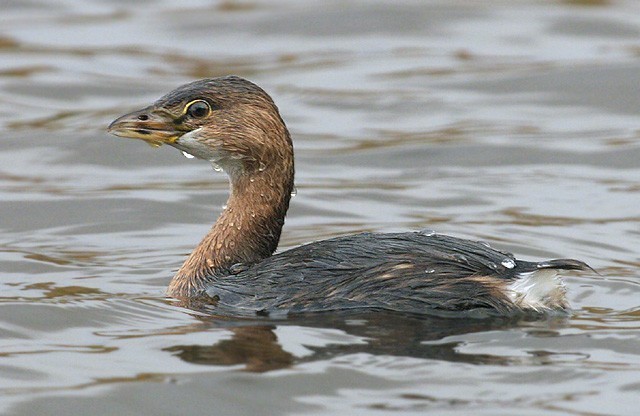
Pied-billed Grebe, Hollingworth Lake CP, Greater Manchester (Photo:
A.Dancy)

Semipalmated Sandpiper, Ballycotton, Cork (Photo:
Ronan McLaughlin)

Nuthatch, Culcheth, Cheshire (Photo:
Neill Carden)

Bullfinch, Cannock Chase, Staffordshire (Photo:
Derek Lees)

Golden Plover, Port Meadow, Oxfordshire (Photo:
Nigel Forrow)

Greylag Goose, Welney WWT, Norfolk (Photo:
Maxwell)

